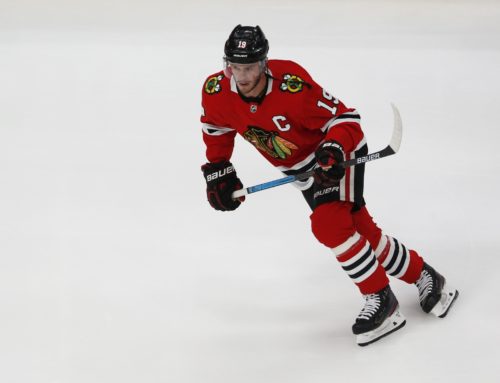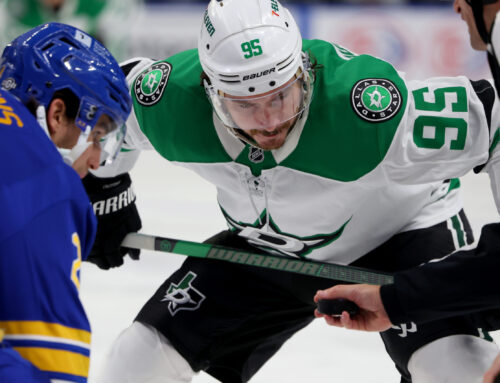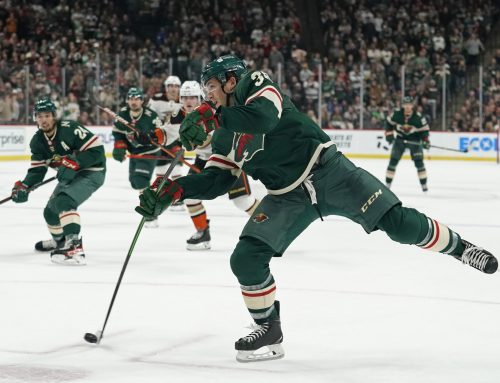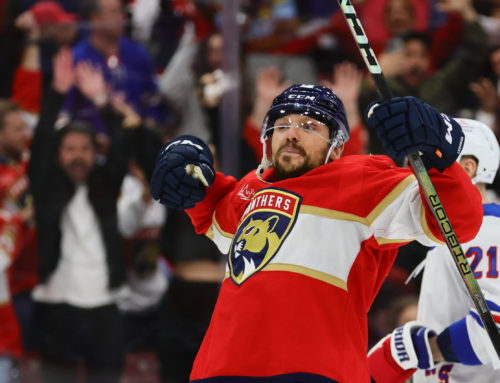I know people are starting to get antsy about the return of the NHL, other sports, and really just some semblance of normalcy, but it's something that I just can't get excited about. There seems to be some sort of plan floated by the media every other day – play in one of the Dakotas, play in Florida, have teams in different areas – but the truth is we're still in the throes of this thing and we don't know what things will look like in a month. Can we just wait and see what the NHL's plan is whenever the NHL, and North American society in general, is actually ready?
Believe me, I get it, I want hockey and my life back as soon as possible. At the same time, I feel like playing Wheel of Fortune with pandemic responses every day is tiresome and probably counterproductive. Can we just take a time out, focus on the things we can control, and just wait a bit?
*
In my most recent Ramblings, I broke down some power play numbers for forwards across the NHL in the 2019-20 season. To round things out, let's look at some stats among defencemen.
The reason for doing this, as mentioned in that Ramblings, is that too often I breeze past power-play points, just listing them as PPPs and moving along. The reality is that there is a lot that goes into every single PPP, whether it's on-ice shooting percentage, IPP (individual points percentage, or the rate at which a player garners a point when he's on the ice for his team's scoring), individual shooting percentage, or whatever else. All the same, it's a necessary exercise to see where players may have improved, where they might improve in the future, and where they may not. Let's dig in. Most stats from Natural Stat Trick.
Drew Doughty is a shot machine now?
This past season was Drew Doughty's age-30 campaign and his 12th full season in the league. This past season also saw the highest shot attempt rate on the power play for Doughty in his career at 31.5 per 60 minutes; he had never been above 30 in any prior season. That shot rate was good for fourth among all defencemen with at least 100 power-play minutes in 2019-20, and his total volume of 64 shots was second.
What's curious about this is that while Doughty's shot rate went up over 50 percent between 2018-19 and 2019-20, the Los Angeles PP shot rate with Doughty on the ice went up only about 10 percent while their goal rate declined. While Doughty was shooting much, much more, and the team was shooting a bit more themselves, they were scoring less often.
It makes an awkward situation when a very fantasy-relevant player is shooting more but it's uncertain if it's what's best for the team. Doughty had 24 PPPs last year and 20 the year before; with his 14 in 67 games this year, he was on pace for 17 PPPs in a full 82-game season. That would have given him his lowest PPP total in five years.
Doughty was shooting a lot more on the PP this year but it doesn't seem like it was really good for him or for team as a whole. It'll be interesting to see if this sustains itself into next season with the team hitting the reset button.
Speaking of shot rates: Cale Makar?
Well, not only did Makar put up 50 points in 57 games, with 19 PPPs mixed in, but he finished fifth among defencemen in shot rate on the power play. What can't he do?
All the same, this is another instance as it was with Doughty: would the team be better served if he didn't shoot all the time? The goal rate with Makar on the ice is more than fine at 8.2 goals per 60 minutes, and that's with the injuries the team endured all year. What would it have looked like if Mikko Rantanen and Nazem Kadri were healthy all year? I'd like to think they'd have scored more but who knows.
The other side of that being: what would it have looked like if Makar shot less and passed more? I'm not saying for sure one way or another because we just don't know. What I do know is that shots from defencemen turn into goals far less often than they do from forwards, so in general, yes, I think they'd be better off if he shot less, but that’s just a guess.
Here's what I do know: Makar is uber-talented, is on a team loaded with skill, and has a lock on the top PP unit. Not only that, but unlike some of other younger defencemen across the league, Makar has shown the ability to at least be passable in peripheral categories like shots and hits. All this is going to keep improving. Makar is a top-3 asset among defencemen in dynasty leagues.
Ivan Provorov has a scoring problem
At the outset of the season, I was bullish on Shayne Gostisbehere, mainly due to ADP. Well, he floundered and Provorov rebounded and the latter d-man ended up being the guy to own in the fantasy game. When NHL play was suspended, Provorov had 16 PPPs which put a 20 PPP season well within reach. The problem was his lack of PP assists, as seven of those 16 PPPs were goals. Of all defencemen on our list, he was third in shooting percentage, coming in just a shade under 18 percent.
The Flyers haven't had a top-10 power play by goals/60 minutes since 2014-15. Not having power plays that score a ton of goals makes it hard for players to put up great fantasy seasons year after year; PP production is too important to overall production for that to happen. In that sense, we should be thankful that Provorov is scoring so much, otherwise his overall fantasy value would surely have taken a hit. All the same, it is a concern moving forward that a team with a lot of talent hasn't been able to be among the elite in half a decade, and that the defenceman running said power play may need to score 8-10 PP goals a year to approach 20 PPPs. That's too much to ask.
Remedying this situation seems easy enough: score more goals. Of course, saying it and doing it are two different things. Provorov does enough elsewhere across the board that if he had 40 points with 15 PPPs rather than 45 points with 20 PPPs, it wouldn't kill his value too much than if it were someone like Miro Heiskanen or Quinn Hughes.
Provorov has a bright future as an important fantasy asset in almost any kind of league. We just need to be aware that the biggest reason for his success this year – well, one of the big reasons – is his shooting percentage, particularly on the power play. That's not something we should rely on year after year.
Thomas Chabot does not have a scoring problem
There were 60 defencemen with at least 100 minutes on the power play in 2019-20, and five of them failed to score. The one with by far the most PPTOI (by over 70 minutes) was Thomas Chabot. He scored zero goals on 27 shots.
We should probably focus on the power-play goals here, of which Chabot had none, but even the PPPs were low at just 11 in 71 games. Again, he did that with loads of PPTOI, coming in fifth in the league in that regard this year. Even just chipping in a few PP goals with a production rate anywhere near the guys around him – Chabot was at 2.86 points/60 minutes and no one else in the top-10 by PPTOI was under 4.3 – and Chabot would have easily pushed for 50 points this year. All that, mind you, on an abysmal team as a 23-year old defenceman. That's how good Chabot was.
I guess the whole point here is to show just how solid Chabot's production was despite scoring zero PP goals, despite a PP assist rate much lower than his comparables, and all on a team that was among the worst in the league. What is a typical Chabot season going to look like in a couple years once this team starts rounding into form? With his peripheral rates, it's hard not seeing him as a top-5 dynasty defenceman right now.





 SEA
SEA NYI
NYI BUF
BUF DAL
DAL
 CBJ
CBJ STL
STL L.A
L.A NYR
NYR ANA
ANA DET
DET
